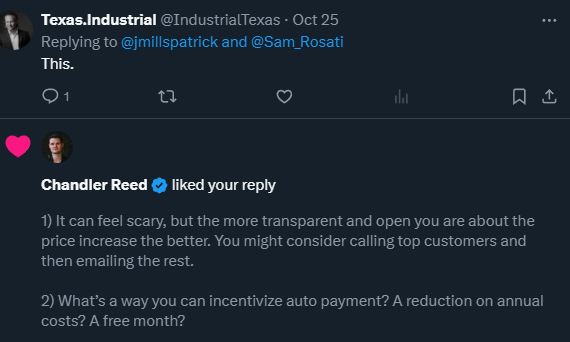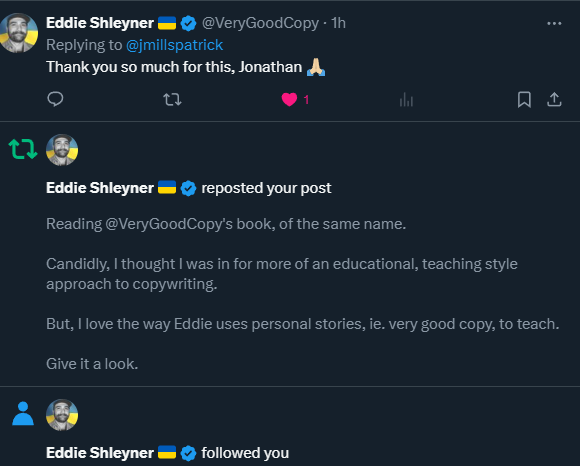How to Increase Prices Without Pissing Off Customers
The mountains look like they're on fire today. This time of year, the peaks near me burst into a brilliant display of yellow, orange, and red as the leaves change and prepare to fall for winter.
I live in Eastern Tennessee, home to one of the nation's most visited National Parks—the Great Smoky Mountains. From my home office, I can see the mountain tops, their autumnal beauty on full display.
As leaves change color, they're actually dying and preparing to drop from their trees. It's a defense mechanism against the cold, a way for trees to conserve energy. In essence, it's how trees adapt to changing conditions.
Just like trees, founders need to adapt to changing conditions. The ability to adapt is often what separates successful founders from unsuccessful ones.
One of the toughest adaptations can be adjusting pricing strategies. Industry trends might shift towards different pricing models, new competitors might enter the market, or economic conditions might change. These factors all demand a response.
Perhaps one of the most daunting tasks a founder faces is increasing prices without alienating customers.
Reactive Reasons for Pricing Increases
Sometimes, you're forced to adjust your prices. This is often due to external factors, though internal factors can also necessitate reactive price changes.
A common reason for price increases is rising production costs, whether due to general inflation or supplier price hikes or something else.
I've also witnessed price increases when new competitors enter the market or when existing competitors influence industry pricing. Typically, new competitors drive prices down as they offer discounts to gain market share. However, there are instances where they force prices up—for example, by creating higher demand, which allows suppliers to increase their prices, or by affecting input costs similarly.
Proactive Reasons for Increasing Prices
There are also times when you might choose to increase prices proactively.
For instance, carefully raising your prices can help test customer price elasticity. If you can increase prices by 10% but only lose 1% of customers, it could be worthwhile. This kind of experimentation can yield valuable insights.
Another reason might be to reduce demand. Why would you want to do that? Perhaps you have more orders than you can fulfill in your normal turnaround time. I've done this personally with my products and services. When my small team is overwhelmed with work, I'll increase prices. It's a lever I use to control workload.
Informed Decisions: Inputs into Pricing Increases
Various factors should influence any pricing decision.
Smart founders proactively increase prices when the data supports it.
So, what kind of data or information should you consider?
Here are some key factors I monitor to inform my decisions:
- Demand - As mentioned earlier.
- Competitors - Also discussed previously. The number of competitors matters too. In a saturated market with many options for customers, raising prices might be challenging.
- Value Proposition - If your product offers superior quality or functionality, you can justify higher prices.
- Timing - Some products are seasonal. For example, winter coats command higher prices in fall and winter than in spring and summer.
Depending on your industry, you may need to consider additional factors.
Easing the Transition: Ways to Reduce Customer Friction
The inspiration for this post came from a question I answered on X/Twitter.
A contact of mine, running a small business, was grappling with the decision to increase prices and how to communicate this change to customers.

These potential approaches could help:
- Be transparent - Customers don't want to hear a "woe is me" story about why you're raising prices. However, the right customers will appreciate honest reasoning.
- Consider calling your top customers - If certain customers represent a significant portion of your revenue, consider explaining the situation to them directly.
- Provide incentives for loyalty - You might offer a short-term discount on the new pricing or a discount for customers willing to commit to an annual renewal before the increase.
- Mass emailing - At minimum, give all customers advance notice of price changes. Don't let them discover the increase at renewal time.
- Grandfathering - In some cases, you might keep current pricing for existing customers. Just be sure to calculate the financial impact, as this could significantly affect your margins.
- Segment increases - Some industries allow for increasing prices for specific customer segments, rolling out price increases in phases. This aligns with the experimentation approach. Monitor churn carefully. One potential benefit of segmented increases is that some customers might be pleased with the changes, especially if they received more value, and might express this publicly.
Ultimately, it's likely that some customers will be unhappy with any price increase. Ideally, these are customers who weren't ideal fits anyway—perhaps they complained frequently or weren't in your target market.
What I'm consuming
I've said it before, and I'll say it again:
I love to write.
In fact, sometimes I write pieces that I never share.
Recently, I published my newest book, "Stress-Free Finances" on Amazon. You can find it here.
Speaking of books and writing, I'm currently reading "Very Good Copy" by Eddie Shleyner.
What I love about this book is that Shleyner's copywriting lessons aren't presented in a dry, textbook format. Instead, he shares them through personal stories. Plus, they're bite-sized—typically less than 500 words each. I even tweeted about how much I'm enjoying it.

If you’ve found this information helpful, I hope you’ll do two things for me.
1) Subscribe to this newsletter. That way, new copies are delivered directly to your inbox.
2) Share this newsletter with one other person that you think might benefit from the information I share.
